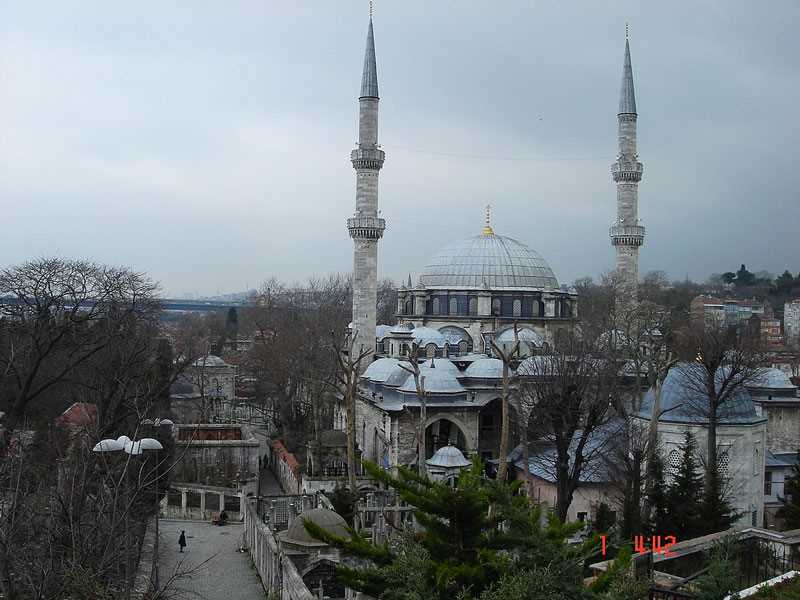An old Ottoman mosque is located in the Ayub Sultan area in the European part of Istanbul, near the Golden Horn, outside the walls of Constantinople.
Built in 1458 AD, the first mosque built by the Ottomans in Istanbul after the conquest of Constantinople in 1453, the Mosque of Ayoub Sultan is located near the mosque. The tomb of the great companion Abu Ayyub al-Ansari, who was buried there when Muslims tried to open Constantinople in 52 AH. But they did not succeed. When Abu Ayyub al-Ansari died, he was recommended to be buried in Istanbul, and indeed he was washed and buried in this area. After the conquest of Constantinople and the advent of the Ottoman Empire, the status of Abu Ayyub al-Ansari became great for the Ottoman Empire. They built a mosque that bore the name of this great companion. This mosque is also called the Mosque of Abu Ayyub al-Ansari.
The architecture of Atiq Sinan was designed and built in the form of a large religious, educational and social complex for Muslims. It is one of the most important tourist attractions in Istanbul. History tells us that this mosque had a famous university. The students come from all the nearby and distant countries. Housing and food for all students of science, also included the mosque between its sections a restaurant for the poor and a bathroom.
In the courtyard of the first mosque there are a number of marble fountains adjacent to the wall, decorated with Islamic and Roman inscriptions, and nearby places are distributed for ablution. The second courtyard is characterized by overcrowding, where the right hand side of the place leads to the large chapel, and directly opposite it lined up many visitors who are waiting to enter the tomb of the great companion Abu Ayyub al-Ansari.
In the middle of the courtyard of the inner mosque, next to the building that houses the mausoleum, is a rectangular courtyard surrounded by a metal fence. Inside the square is a huge old tree that is believed to have sprouted in this place after the death of Abu Ayyub al-Ansari. .
A large number of wives of the Ottoman sultans and their daughters, senior ministers and teachers, and many important figures in the Sultan's court recommended that they be buried in the same neighborhood as the tomb of Abu Ayyub al-Ansari. Also, many people come to this place to be blessed to respond to God's prayers and achieve what they wish, we note the reluctance of single women to the mosque to seek marriage, as well as boys who are ready to circumcise, and accompany their parents there for blessing, and parents come to call their sons to succeed in life and study and find work. People also believe that the water that flows in that spot is Mubarak's water, so they use it in the hospital, and so on.
The placekeepers put some of the marble inscriptions that tell the biography of this great companion, and dissuade him from what visitors may do with heresies updated at his grave.








